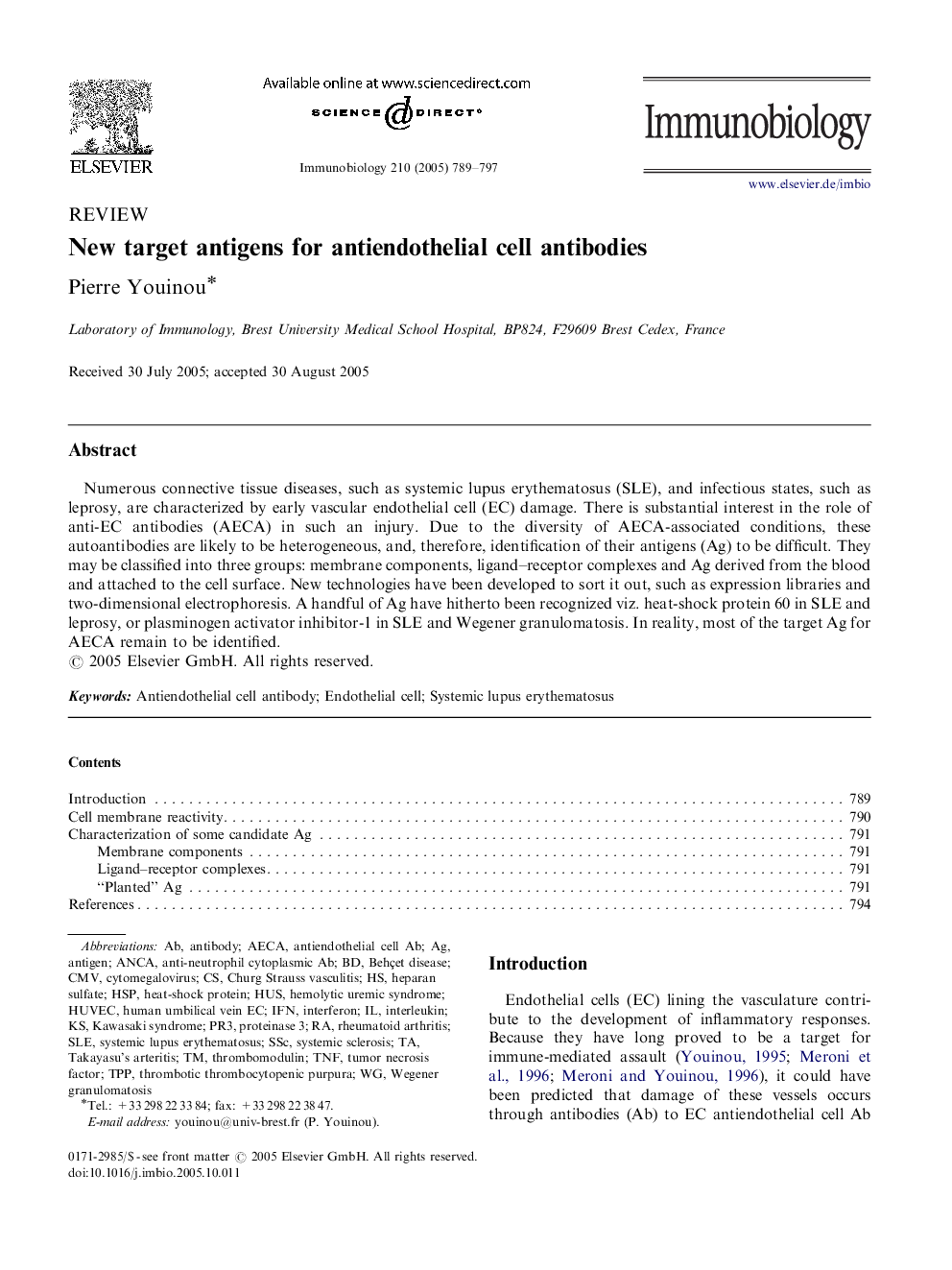| Article ID | Journal | Published Year | Pages | File Type |
|---|---|---|---|---|
| 9913290 | Immunobiology | 2005 | 9 Pages |
Abstract
Numerous connective tissue diseases, such as systemic lupus erythematosus (SLE), and infectious states, such as leprosy, are characterized by early vascular endothelial cell (EC) damage. There is substantial interest in the role of anti-EC antibodies (AECA) in such an injury. Due to the diversity of AECA-associated conditions, these autoantibodies are likely to be heterogeneous, and, therefore, identification of their antigens (Ag) to be difficult. They may be classified into three groups: membrane components, ligand-receptor complexes and Ag derived from the blood and attached to the cell surface. New technologies have been developed to sort it out, such as expression libraries and two-dimensional electrophoresis. A handful of Ag have hitherto been recognized viz. heat-shock protein 60 in SLE and leprosy, or plasminogen activator inhibitor-1 in SLE and Wegener granulomatosis. In reality, most of the target Ag for AECA remain to be identified.
Keywords
ANCATNFTPPSSCPR3HUVECHspAECATakayasu's arteritisRheumatoid arthritissystemic sclerosishuman umbilical vein ECinterferonIFNinterleukinBehçet diseaseThrombotic thrombocytopenic purpuraThrombomodulinHUSEndothelial cellKawasaki syndromeHemolytic uremic syndromecytomegalovirusCMVtumor necrosis factorSystemic lupus erythematosusSLEHeparan sulfateAntibodyAntigenheat-shock proteinproteinase 3Wegener granulomatosis
Related Topics
Life Sciences
Biochemistry, Genetics and Molecular Biology
Cell Biology
Authors
Pierre Youinou,
